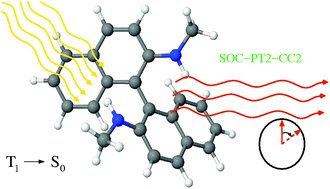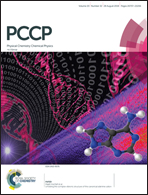Circularly polarised fluorescence and phosphorescence calculations on organic molecules using the approximate coupled-cluster model CC2†
Abstract
We report the first calculations of rotational strengths for circularly polarised phosphorescence at the coupled cluster level. The rotational strengths for circular dichroism (CD), circularly polarised fluorescence (CPF) and circularly polarised phosphorescence (CPP) were calculated for β,γ-enones and ketones with conjugated double bonds using the CC2 model. To compute spin-forbidden CPP, spin–orbit coupling with perturbation theory is employed within a response theory framework (SOC-PT-CC2). For closed-shell molecules containing only light elements, a spin-free formalism is used to treat the singlet–triplet transitions. It is verified that the simplification obtained in the spin-free formulation from the Wigner–Eckart theorem for spin-forbidden oscillator strengths is also valid for the rotational strengths. Our implementation utilises the resolution of identity (RI) approximation for two-electron integrals which facilitates applications to larger molecules. In the current study, the rotational strength for spin-forbidden circularly-polarised phosphorescence was calculated for a chiral aromatic system, S-DMBDA, containing 44 atoms.

- This article is part of the themed collection: 2018 PCCP HOT Articles


 Please wait while we load your content...
Please wait while we load your content...